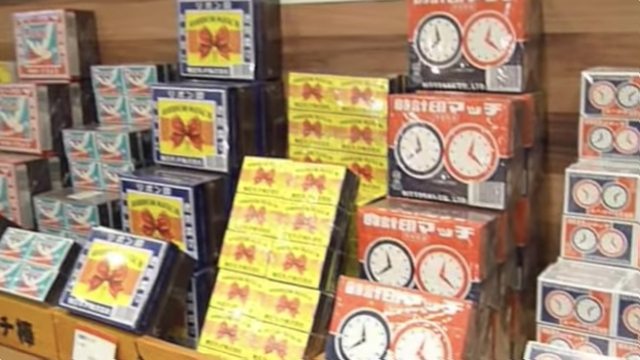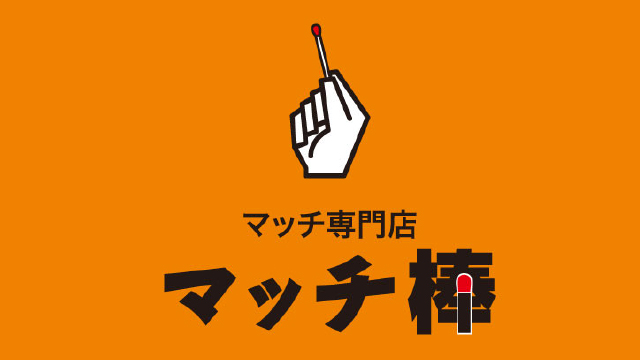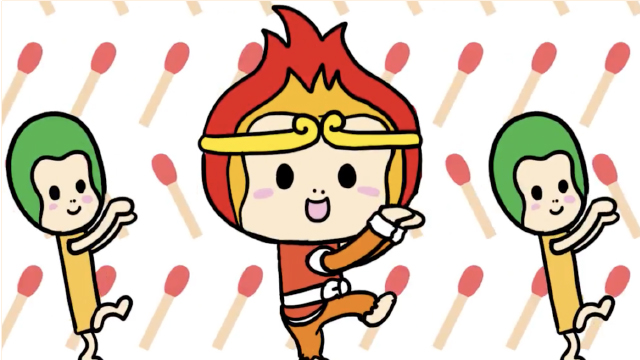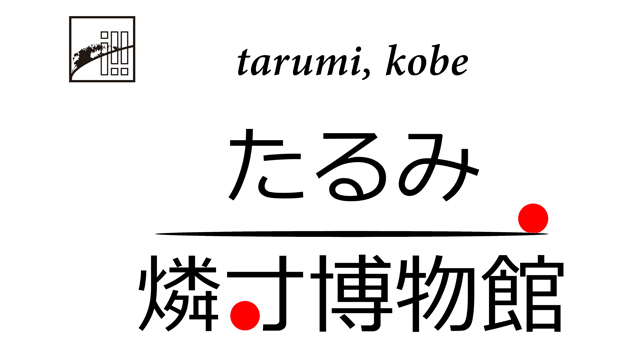Chat About Matches
HOME > Virtual Museum > Chat About Matches > Your Fire For Your Use
- GuestMr. Junsei Kawasaki
- HostsKaneaki Okada(Director of Japan Match Manufacturers Association and President of Daiwa Sangyo Co., Ltd.)/ Yutaka Kato(Match label collector/graphic designer)

The 65th Buddha priest of Shingonshu Sect, Chisanha, Rokuharamitsuji Director of Japanese-Sri Lankan Buddhism Welfare Society Rokuharamitsuji in Kyoto was founded in 951 (Tenreki 5) by Saint Kuya, who was the second prince of Daigo Emperor. Its main house has been designated as the important cultural asset of Japan. In addition, about 2,300 important cultural works such as Saint Kuya Statue, Taira Kiyomori Statue, Unkei Statue, and Tankei Statue as well as Jizo Bosatsu created by Teicho are kept in this temple.
Rokuharamitsuji:http://www.rokuhara.or.jp/
Talking about matches, banks do not give us free matches any more these day, (smile) so we have to buy them.
 Kawasaki
Kawasaki Okada
Okada
Thank you for buying matches. (Smile)
In our temple, we were once using lighters, of which fire was not extinguished easily when lighting candles. The lighter was designed with windproof device. But things didn’t go well. People didn’t like lighting candles with a lighter. In other words, the fire must have been a new one every time they lighted candles. With matches, they can start a new fire; one matchstick starts a “new fire”, right?
However, it seems people do not think a lighter starts a new fire. People often said, “Are there matches?” (Smile) We worry fire from matchstick wastes, but visitors complain if we do not have matches for candles. (Smile)
 Kawasaki
Kawasaki Kato
Kato
Yes, it is certainly understandable.
Striking a matchstick has a sense of starting “new fire” because sticks in a matchbox are all new ones.
 Okada
Okada
Before, at a nightclub in Ginza, the hostess used to light my cigarette with matches or with a very exquisite lighter. I have never seen any 100-yen lighter was used there. I think it silently gives us a message that it is your fire for your use only. Also I know places where matches are used: they are classy restaurants in Kyoto. Designs of their match-labels look very sophisticated with restaurants’ name on it. People value even a little thing like matches in those elegant places.
 Kato
Kato
Indeed. Talking about a 100-yen lighter, I feel it wiped off the differentiation in our life.
When I was young, I was not rich to have an expensive lighter like Dupon or Dunhill, so I was using matches. I remember people who could afford used those expensive lighters. And, I think I understand it. However, since a 100-yen lighter appeared in the market, everyone has been using it because it is cheap. All people are same now. Differentiation and fashionableness are not here anymore, and I wonder whether it is good or bad from the standpoint of a designer.
 Okada
Okada
Do you know how our ancestors were lighting the sacred light in the old time?
I am not sure about it, but I think fire had been started by some ritualistic methods in old times. It is the fire named “jouka (sacred fire), which is started first thing in the morning in every temple. I think matches have been used for quite some time to start jouka. Two candles are lighted with the first fire in front of the principal Buddha. It is called “the first fire” in a temple. And then, fire is moved to the candle in a cylinder shape stone as sacred fire – namely jouka, and it is used all day to light other candles one after another.
 Kawasaki
Kawasaki Okada
Okada
About what time do you start fire as the first thing in the morning?
It is about 7:30 am because there is a security system working in the main building before then, but our morning prayer starts much earlier than this.
The major reason of temple fires is lighted candles and incense sticks. So, the priest in charge of fire-prevention in our temple puts his finger into the ashes of an incense burner to confirm that fire is completely extinguished at the end of the day. If he feels warmth in the ashes, it means the fire still remains there.
There are about 2,300 important cultural assets in our temple. Therefore, we need to be nervous to protect all of them from disaster.
 Kawasaki
Kawasaki Kato
Kato
Wow, you have 2,300 works of important cultural asset in your temple!
Yes. We pay great attention to the maintenance of them, and we are also very careful for their safety.
To begin with, “fire” is a special thing for Buddhism to use for the ritual. It is not water or wind that spoils such service facilities and the cultural asset, but it is fire. (Smile) It sounds contrary.
I think not only the Buddhism but also many other Religions use fire quite often in the ritual. I think fire is very significant in the Christianity and Islam, too. Therefore, “Matches” and “Religion” cannot be considered separately in any country, can they? However, fire is dangerous, too.
 Kawasaki
Kawasaki Kato
Kato
I think storage of matches must be carefully handled.
At present in our temple, only necessary amount of matches are kept in fireproof boxes safely.
By the way, does manufacture of matchsticks cause any environmental problem like deforestation etc?
 Kawasaki
Kawasaki Kato
Kato
Matchsticks are made of trees called Aspen, and they grow very fast. So if the trees are not felled, they start decomposed quickly. Therefore, there is not a problem on the environment at all. Also, matches decompose in the soil, so we think matches are very friendly to the environment.
Is that so? I didn’t know it. Around when did matches start to be used in Japan?
 Kawasaki
Kawasaki Kato
Kato
Last year was the 130th anniversary of foundation of the domestic match production.
Then, there was an interesting story told in that time before Meiji matches were commonly used at ordinary families in Japan. A strange rumor spread. To manufacture matches, “phosphorus” is used as one of the main material, and “phosphorus” is an element of bones of animals and human beings. It was the beginning of the rumor, and people started to say that, the new invention, matches were manufactured with bones of animals and human beings; so, they are “filthy.”
Then, match companies panicked and publicized a brief advertisement as the measures of rumor, “Match is for lighting sacred candles.”
In other words, the advertisement persuaded the crowd saying, “Fire of matches is not filthy but serene.” As a result, temples started to use matches, which has become the custom and matches entered into the people’s life quickly.
I see. There are many things people will happily start to use, if they know temples are using them. It is strange that if one item is named “handkerchief,” then people use it only as handkerchief, and if the item is named “tea towel,” then it is used only for the purpose of tea towel. Suppose the match is named “for lighting sacred candles,” people will never use that match for kitchen purpose. I think Japanese people are peculiar in that sense.
 Kawasaki
Kawasaki Kato
Kato
The match exhibition was held on the New Year Day of this year, and, then, a designer was showing an interesting match.
It was a matchbox made of fashionable acrylic case containing 15 long matchsticks. Its purpose is to use one stick to light birthday candles only on the birthday that comes once in every year. And as you know, number of candles increases by the age, matchsticks are made very long so that one matchstick can light them all. One matchstick is used once in a year, so that match is for 15-year use. The price was 3,000 yen. (Smile)
Yes, I understand. I bet there are surely some people who buy it even for 3,000 yen.
I think Japan is a civilized country as people have a versatile mind that can afford to buy such a thing. People find fringe benefits of a trifle thing. In these senses, the role of matches is finishing, but how about considering matches as luxury goods? The designer’s capability like Mr. Kato’s is likely contributive to development of such items, right?
 Kawasaki
Kawasaki Kato
Kato
I brought an interesting item today; please look at this.
This one is a match made about 100 years ago. It can still start fire.
Other one is the reprint version of this and was made for the 130th anniversary.
And, this is a match to light incense sticks. Same chemical of the match head is attached to the end point of this incense stick, so if you strike this incense stick on the match, then the incense stick is lighted. (Smile)
This is a pine needle match, which was made during the war in about 1944, when people lived on meager goods then. There weren’t enough trees to make sticks around that time, people had to use pine needles that contained oil to replace matchsticks.
I assume it was painstaking to make the pine needle match, but it was also painstaking to use it.
 Okada
Okada
My goodness, you have such an old matches, Mr. Kato.
Where did you find them?
 Kato
Kato
I looked around and searched very hard in the antique shops and in the antique trade fairs held in Shrines. (Smile)
I find candles and incenses that pass out burning to be very transient. I feel they tell me “things are transitory.”
The match is also the same, though I don’t feel so for the lighter. (Smile)
That is why we need matches for the religious ritual; they should not be out of production.
And, again I like to say that only matches can light “your fire for your use.”
 Kawasaki
Kawasaki



